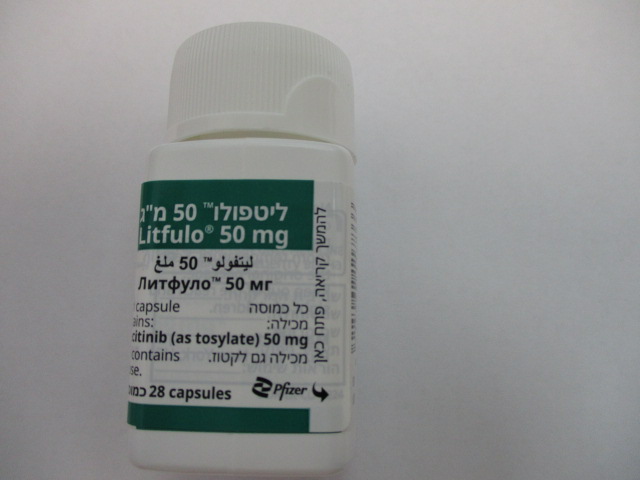Quest for the right Drug

ליטפולו 50 מ"ג LITFULO 50 MG (RITLECITINIB, RITLECITINIB AS TOSYLATE)
תרופה במרשם
תרופה בסל
נרקוטיקה
ציטוטוקסיקה
צורת מתן:
פומי : PER OS
צורת מינון:
קפסולות : CAPSULES
עלון לרופא
מינוניםPosology התוויות
Indications תופעות לוואי
Adverse reactions התוויות נגד
Contraindications אינטראקציות
Interactions מינון יתר
Overdose הריון/הנקה
Pregnancy & Lactation אוכלוסיות מיוחדות
Special populations תכונות פרמקולוגיות
Pharmacological properties מידע רוקחי
Pharmaceutical particulars אזהרת שימוש
Special Warning עלון לרופא
Physicians Leaflet
Interactions : אינטראקציות
4.5 Interaction with other medicinal products and other forms of interaction Potential for other medicinal products to affect the pharmacokinetics of ritlecitinib The coadministration of multiple 200 mg doses of itraconazole, a strong CYP3A inhibitor, increased the area under curve (AUC)inf of ritlecitinib by approximately 15%. This is not considered clinically significant and, therefore dose adjustment is not required when ritlecitinib is coadministered with CYP3A inhibitors. The coadministration of multiple 600 mg doses of rifampicin, a strong inducer of CYP enzymes, decreased the AUCinf of ritlecitinib by approximately 44%. This is not considered clinically significant and, therefore dose adjustment is not required when ritlecitinib is coadministered with inducers of CYP enzymes. Potential for ritlecitinib to affect the pharmacokinetics of other medicinal products Multiple doses of 200 mg once daily ritlecitinib increased the AUCinf and Cmax of midazolam a CYP3A4 substrate, by approximately 2.7-fold and 1.8-fold, respectively. Ritlecitinib is a moderate inhibitor of CYP3A; caution should be exercised with concomitant use of ritlecitinib with CYP3A substrates (e.g., quinidine, cyclosporine, dihydroergotamine, ergotamine, pimozide) where moderate concentration changes may lead to serious adverse reactions. Dose adjustment recommendations for the CYP3A substrate (e.g., colchicine, everolimus, tacrolimus, sirolimus) should be considered. Multiple doses of 200 mg once daily ritlecitinib increased the AUCinf and Cmax of caffeine, a CYP1A2 substrate, by approximately 2.7-fold and 1.1-fold, respectively. Ritlecitinib is a moderate inhibitor of CYP1A2; caution should be exercised with concomitant use of ritlecitinib with other CYP1A2 substrates (e.g., tizanidine) where moderate concentration changes may lead to serious adverse reactions. Dose adjustment recommendations for the CYP1A2 substrate (e.g., theophylline, pirfenidone) should be considered. The coadministration of a single 400 mg dose of ritlecitinib increased the AUCinf of sumatriptan (an organic cation transporter [OCT]1 substrate) by approximately 1.3 to 1.5-fold relative to sumatriptan dose given alone. The increase in sumatriptan exposure is not considered clinically relevant. Caution should be exercised with concomitant use of ritlecitinib with OCT1 substrates where small concentration changes may lead to serious adverse reactions. Ritlecitinib did not produce clinically significant changes in the exposures of oral contraceptives (e.g., ethinyl oestradiol or levonorgestrel), CYP2B6 substrates (e.g., efavirenz), CYP2C substrates (e.g., tolbutamide), or substrates of organic anion transporter (OAT)P1B1, breast cancer resistant protein (BCRP), and OAT3 (e.g., rosuvastatin). Paediatric population Interaction studies have only been performed in adults.

שימוש לפי פנקס קופ''ח כללית 1994
לא צוין
תאריך הכללה מקורי בסל
לא צוין
הגבלות
לא צוין
מידע נוסף
